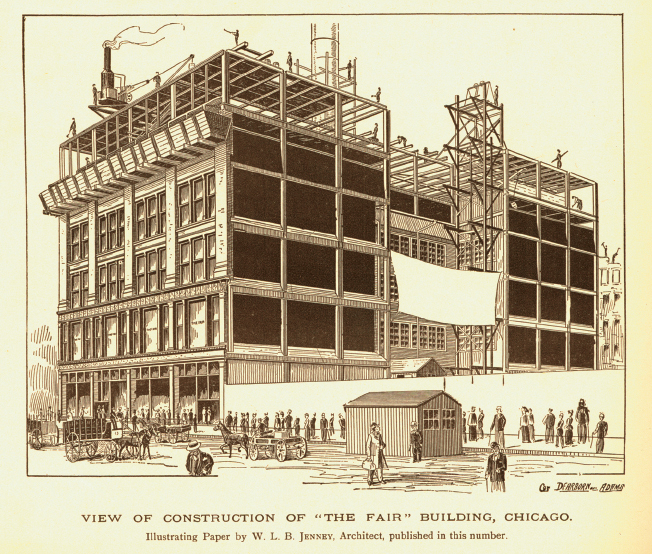How did municipal governments respond to the challenges of urban expansion?
Printed Page 569

Figure false: Chicago Skyscraper Going Up
Figure false: With the advent of structural steel, skyscrapers like this one in progress in Chicago in 1891 became prominent features of the American urban landscape. This architect’s rendering of the Fair Building, a department store designed by William Le Baron Jenney, shows a modern skyscraper whose foundations supported the structural steel skeleton so that the walls could simply “hang” on the outside of the building, because they no longer had to support the structure. Newberry Library (Inland Architect, Nov. 1891).
PRIVATE ENTERPRISE, not planners, built the cities of the United States. With a few notable exceptions, cities simply mushroomed, formed by the dictates of profit and the exigencies of local politics. With the rise of the city came the need for public facilities, transportation, and services that would tax the imaginations of America’s architects and engineers and set the scene for the rough-and-tumble of big-city government, politics, and bossism.
CHRONOLOGY
1871
- –Boss Tweed’s rule in New York City ends.
- – Chicago’s Great Fire.
1883
- –Brooklyn Bridge opens.
1893
- –World’s Columbian Exposition.
- – Panic on Wall Street touches off a major economic depression.
1895
- –Boston Public Library opens in Copley Square.
1897
- –Nation’s first subway system opens in Boston.